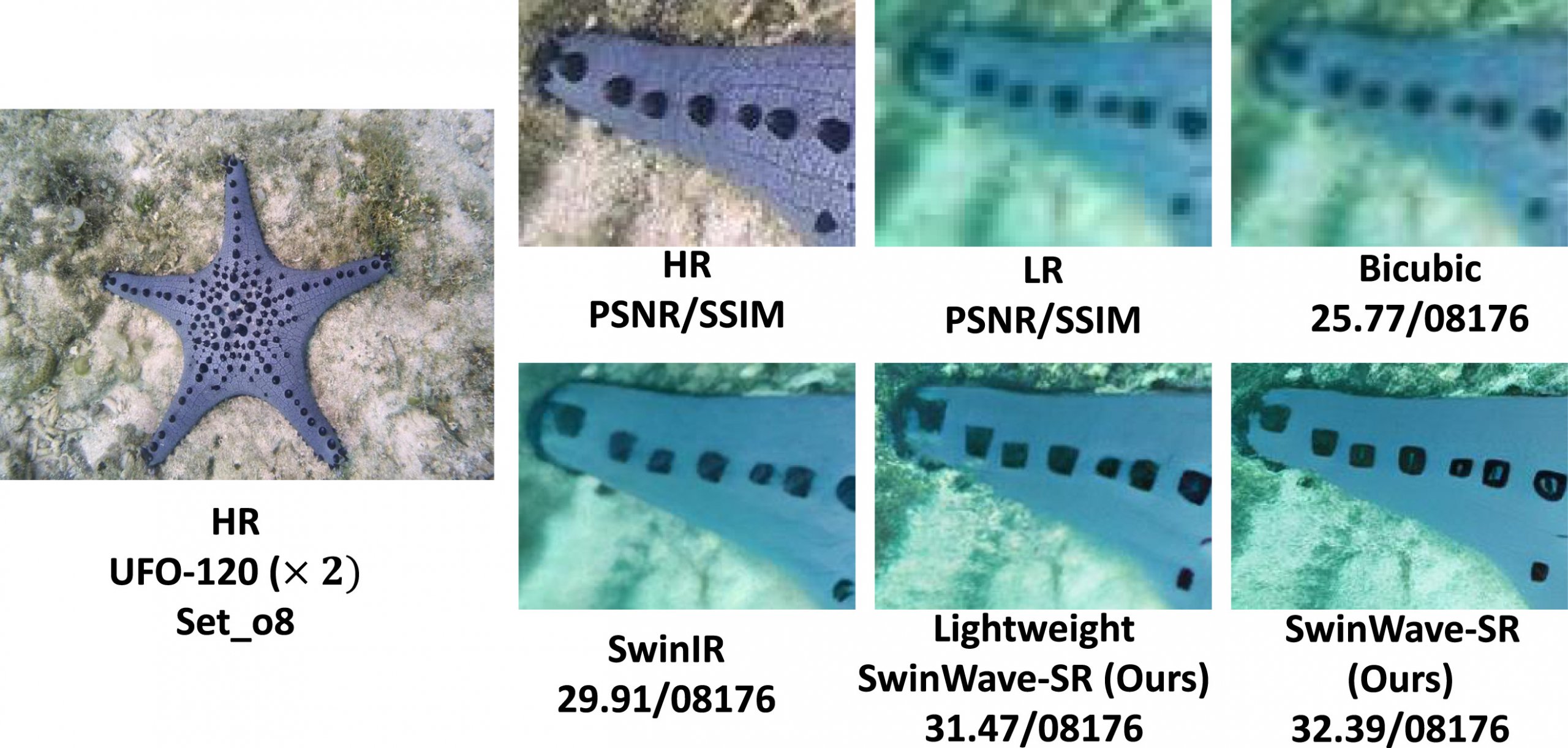
Khalifa University researchers develop algorithm to help underwater robots see more clearly
Unmanned underwater vehicles (UUVs) are at the forefront of underwater research and exploration. They rely heavily on visual sensors for navigation, monitoring, and security purposes. However, the underwater environment presents significant challenges for imaging, such as poor visibility and the scattering of light, which degrade image quality and impede vision-based tasks.
A team of researchers from Khalifa University has developed a new computer vision algorithm for efficient and accurate underwater image enhancement to combat the challenge of severe and unpredictable degradation in underwater imaging. Called SwinWave-SR, the algorithm restores the corresponding low-resolution image to a high-quality counterpart with real-world applications, including medical imaging, surveillance, and face recognition, as well as underwater imaging.
Dr. Sajid Javed, Dr. Naoufel Werghi, Dr. Fayaz Ali Dharejo, Dr. Iyyakutti Iyappan Ganapathi, and Basit Alawode, all from the Department of Electrical Engineering and Computer Science at Khalifa University, collaborated with researchers from Waterford Institute of Technology, Ireland, and King Saud University, Saudi Arabia. Their results were published in Information Fusion, a top 1% journal.
“A single low-resolution image can correspond to multiple high-resolution interpretations,” Dr. Sajid says. “For images obtained by underwater robots, this problem is aggravated by adverse environmental conditions. Due to their size, high-definition cameras can’t be used on robots, and as a result, underwater robots are only capable of surveying objects from a large distance, which reduces the quality of underwater images and leads to impeded vision-based tasks. Computer vision techniques offer a solution to this problem.”
The team’s algorithm preserves image details across various resolution scales without information loss. This approach is particularly beneficial for underwater imaging, where detail preservation is crucial and computational resources are often limited.
“SwinWave-SR refines texture details while preserving detailed features,” Dr. Sajid says. “Time efficiency is an essential consideration for practical application, and our proposed method is remarkably quick and accurate, achieving high-quality, super-resolution results with significantly reduced computational time, making it a promising advancement in image enhancement.”
Jade Sterling
Science Writer
13 March 2024






